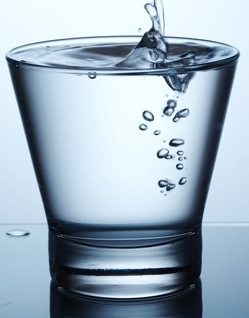Dutch tap water will be chlorinated
I once had a Dutch roommate back in Québec in the 1990s who asked me why our tap water looked so afwul. I explained that it’s slightly cloudy because it’s full of chlorine, but tastes fine. Many people pour water into a jug fitted with a carbon filter and keep it in the fridge. Problem solved.
“Isn’t there chlorine in the water in the Netherlands?” “Oh, no” she said, “we have very clean water”. For years I thought the Dutch were water geniuses and that Quebeckers were water dummies.
It turns out Dutch water has a dirty little secret: it’s chock full of the bacteria that causes legionnaire’s disease. Professor Annelies van Bronswijk, Professor of Health Technology at Eindhoven University of Technology estimates that 800 people die of legionnaires’ disease every year, more than the dozens quoted in official statistics. “Since severe pneumonia is what most people with legionnaires’ disease die from, you can put two and two together and get a proper estimate of the problem.”
These days, Western countries chlorinate with monochloramine, a compound of chlorine, which doesn’t leave a taste.


On the other hand, these chlorine compounds are well known carcinogens.
Actually some Dutch water is the best water in the world, it comes (in my part of the country) from really deep natural reservoirs of water which melted out of the glaciers at the end of the last ice-age. You could run it out of the tap, put it in bottles, and sell it as “natural spa water from our own springs…” and not really mislead anyone. Unfortunately, due to European regulations, one nowadays has to put awful things like chlorine in it so that we will all die of cancer, just a little before we succumb to pneumonia after legionary’s disease during the 10 years we spend in the nursing home with Altzheimer’s disease because of the aluminium in … or whatever.
The Dutch sell Bru water in bottles, but the Belgians seem to market Spa a lot more.
The water in the Netherlands is to be chlorminated, not chlorinated. So, the headline from your linked RNW story is misleading; infact, it’s just plain wrong. There is a difference. Chloramine is formed from chlorine and ammonia gases. Here in the US, several large cities and even small community water districts are switching from chlorine to chloramine. From the Environmental Working Group’s website:
“Chloramine appears to reduce the peak levels of chlorination byproducts, particularly THMs, but at the same time it adds a whole new complex of contaminants to the tap water supply that are very poorly studied. Chloramines are known to be toxic to kidney dialysis patients, who cannot drink chloraminated water, and it is extremely toxic to fish, which die if chloraminated water is used in their tanks. The human health impacts of long term consumption of chloramine byproducts are basically unknown, even as chloramine is being added to the tap water of millions of people nationwide.
The public and policy makers have been led to believe that they must accept either water polluted with pathogens or water contaminated with high levels of chlorination and chloramination byproducts. This is simply not true.”
Link: http://www.ewg.org/book/export/html/8623
Fortunately, my city in Vermont does not chloraminate its water, but neighboring county towns do. Recently, I spent some time in one of those towns (overnight) and took a shower with water that is chloraminated. 20 minutes after the shower, my skin developed a severe rash and itching. This reaction is common in chlorinated areas.
This is what the Dutch can expect, too.
[…] more here: 24 oranges » Dutch tap water will be chlorinated Share […]
Whatever the case (chlorin-, chlorim-), it’s bad news for gardeners w/o their own well. Water in treated in such a manner needs to sit for a day or the disinfectants in it destroys beneficial soil bacteria. Sorta like how strong antibiotics destroy beneficial bacteria in the intestines.
What happened to UV treament? Did the bacteria outsmart us again?